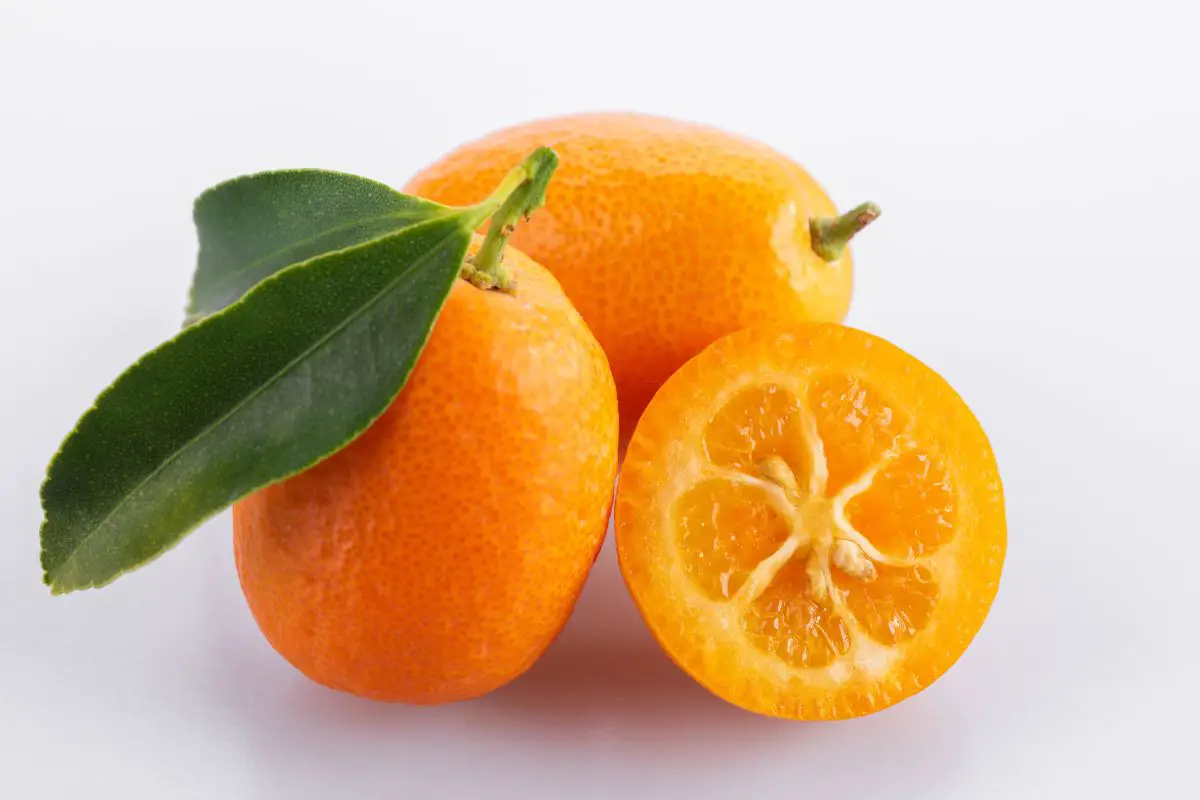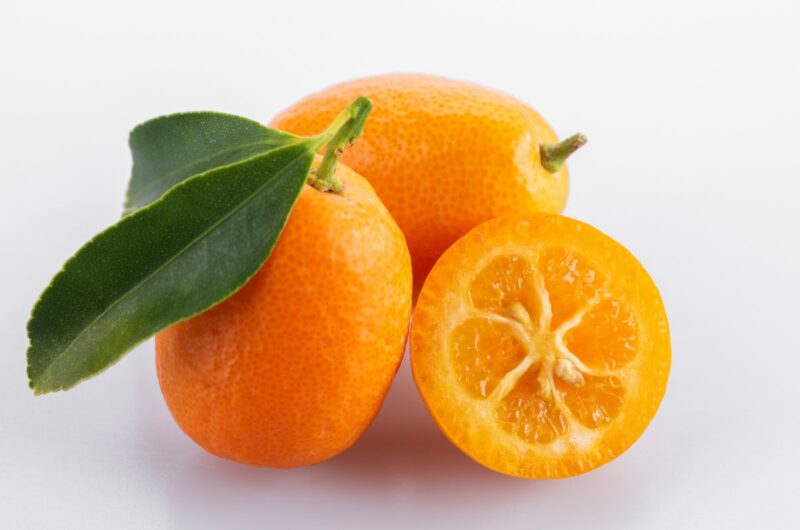When it comes to unique fruits and vegetables, there are very few that are quite like the Kumquat.
Unless you’ve held one of these small, orange fruits in your hand, it’s kind of hard to even really appreciate them, these tiny pockets of citrus-flavored goodness.
They’re a very sort-after ingredient in many Asian sweet recipes, but they’re also some of the rarest fruits, meaning that you’ll more often than not find that they’re missing from your pantry if you even had them in the first place!
So, what exactly do you do if you’re looking to make a recipe that would normally call for them?
Well, you improvise, and use one of the substitutes that we have come across in this guide we have compiled for you!
Not only will we show you the best foods to replace kumquat with, fruit or otherwise, but we’ll also show you what key qualities you’ll need to find in a good replacement yourself.
That way, you can go out there, and find the best replacement for your palette!

What Is Kumquat?
So, what exactly is this fruit that you’ll be looking to replicate in a recipe? Or, at least, its flavors?
Kumquat is a small orange fruit that bears a lot in common with orange varieties. However, kumquats are typically much smaller, usually around the size of olives.
They have a very similar internal structure to many citrus fruits too, with them having a tough rind/skin, and the pulp inside being very juicy and benign segmented.
However, they have a lot more rind content compared to oranges, on account of their smaller size.
As we hinted at, kumquats have been grown across many parts of Asia, with China, Japan, India, and the Philippines, all having their cultivars (types of fruit) that they are known for.
And since they were introduced to Europe in the 16th century, and later the Americas, many parts of the world now have their dedicated varieties!
Because of these many varieties, it can be hard to pinpoint an exact flavor or smell that can be given to all kumquats. However, they are generally quite sweet, with a fragrant aroma and a high citrus content.
So, a substitute is going to need to meet all of these criteria:
- Sweet taste, with most parts of the fruit being edible (pulp & skin)
- A fragrant smell
- It can retain its flavor when cooked or preserved.
Rind protects the fruit from spoiling, but the fruit spoils fast when it does start to rot.
So, with those criteria to meet, let’s check out these substitutes!
1. Clementine Sections
There’s a reason that we made so many orange and citrus fruit comparisons when we were outlining the profile of the Kumquat. Expect to see a lot of familiar fruit products here!
We’re starting with one of the most popular fruits, the clementine!
Clementines and kumquats have pretty much the same flavor profile when it comes to their pulp, with both of them having hints of sourness, a little bitterness, and, of course, tons of sweetness in there too!
Probably the only noticeable difference in terms of flavor is Clementine’s lack of acidity, making it a little more palatable to milder palettes.
Plus, the rind of clementine is much easier to remove, if you don’t like the flavor or texture that it has.
However, like kumquats, the skin of clementines can be eaten, and add a little extra bitterness and tougher texture to a dish that they are included in.
They even rot quickly too! Not exactly much of a positive, to be fair. But it just goes to show how similar these fruits are in so many ways!
2. Calamondin
This next substitute might be even trickier to get a hold of than kumquats. However, if you can, the calamondin is an excellent alternative to recommend kumquat-lovers!
Calamondin gets its name from both lemon and kumquat, as the fruit was considered something of a cross between the two fruit when they were first introduced to French explorers and colonizers when they arrived in Southeast Asia, the area that calamondin is originally from.
That comparison is fair, given the similarities that this fruit has between the two, outside of its rind, color, and pulpy inside.
These taste almost like more sour or bitter kumquats, making them an appropriate substitute in many recipes and preservatives that you would normally use kumquats for.
They’re similar sizes too, with calamondins generally being a few centimeters across in diameter, with the rind being thin and easy to peel.
However, because they are noticeably sourer, you’ll need to account for that change in any recipe that you add them to.
Not only that, but calamondins don’t have the same widespread appeal that kumquats have, still being hard to find outside of Southeast Asia, where it was originally grown.
3. Diced Orange (Peeled)
Of course, if clementines are a great substitute, then oranges would reasonably also be high on the list of alternatives for kumquats!
With the flavor of oranges being so famous, we probably don’t need to describe to you what they taste like!
Instead, we can assume that you can see the similarities between the flavors of kumquats and this world-famous citrus fruit by now.
A little sour, some bitterness, and a whole load of sweetness to boot!
Plus, not only are oranges readily available pretty much anywhere, but they are much larger too.
You can get the same amount of pulp from a single navel orange as you can from maybe 10 to 15 kumquats! Dicing up orange is the perfect way to get your pieces down to the right size that you need!
The only issue that you may find is that the rind on oranges is a lot tougher and thicker than it is on a kumquat. This is why we recommend that you peel an orange before dicing it and using it in your recipes.
Do that, and you have an ideal substitute!
4. Lemon Slices With Marmalade/Jelly
In the same way that oranges are a great substitute for kumquats thanks to their slightly bitter and sour flavor, you would assume that lemons would also be a decent substitute.
Certainly, their pulpy contents and edible rind that can be eaten straight and zested make lemons an overall decent substitute for texture and uses.
However, the flavor of lemon is significantly more sour and bitter than a kumquat is, as well as having a much higher acid content.
All these flavor features make it an unfit substitute when used on its own, at least for people that cannot stand pure lemon flavoring.
However, there is a way to make lemon a little more compatible with recipes that call for kumquats.
By mixing it with a sweeter marmalade or jelly-based preservative, you can mellow out the acidity of the lemon, and make it a much better fit for a recipe that would normally call for the olive-sized original fruit.
5. Limequats
Do you remember how we compared the taste of calamondins to a cross between lemons and kumquats?
Well, what if we told you that there is a cross between these citrus fruits? Well, a cross between a citrus fruit and a kumquat, at least.
Combining the sweetness and tart flavor of kumquat with the sourness and high acidity of lime, you have a cultivar that is almost ideal for lovers of kumquats who want a little more punch in their compact little fruits!
Final Notes
So, as you can see, finding a substitute for kumquats is weirdly both simple and yet at the same time confusing. Many citrus fruits that are easier to get a hold of can be used in place of this exotic fruit.
However, they also sometimes need an extra ingredient or two to nail that distinct balance of sourness and sweetness.
That just goes to show you just how unique a fruit kumquat is!
5 Best Kumquat Substitutes
Course: Substitutes4
servings30
minutes40
minutes300
kcalIngredients
Clementine Sections
Calamondin
Diced Orange (Peeled)
Lemon Slices With Marmalade/Jelly
Limequats
Directions
- Decide on what substitute you need
- Pick a substitute from the list above
- Read what you need to substitute with
- Create the recipe and enjoy
Recipe Video
https://www.youtube.com/watch?v=4H-XBEJENasVideo can’t be loaded because JavaScript is disabled: Kumquat Citrus Marmalade & Orange Alternative (https://www.youtube.com/watch?v=4H-XBEJENas)- What Exactly Do Chickpeas Taste Like? Is There A Distinct Flavor? - September 30, 2023
- Top 11 Low Carb Options at Sonic Drive-In for Keto Diet - September 30, 2023
- What Should You Serve Alongside Potato Salad? 8 Incredible Side Dishes - September 30, 2023











